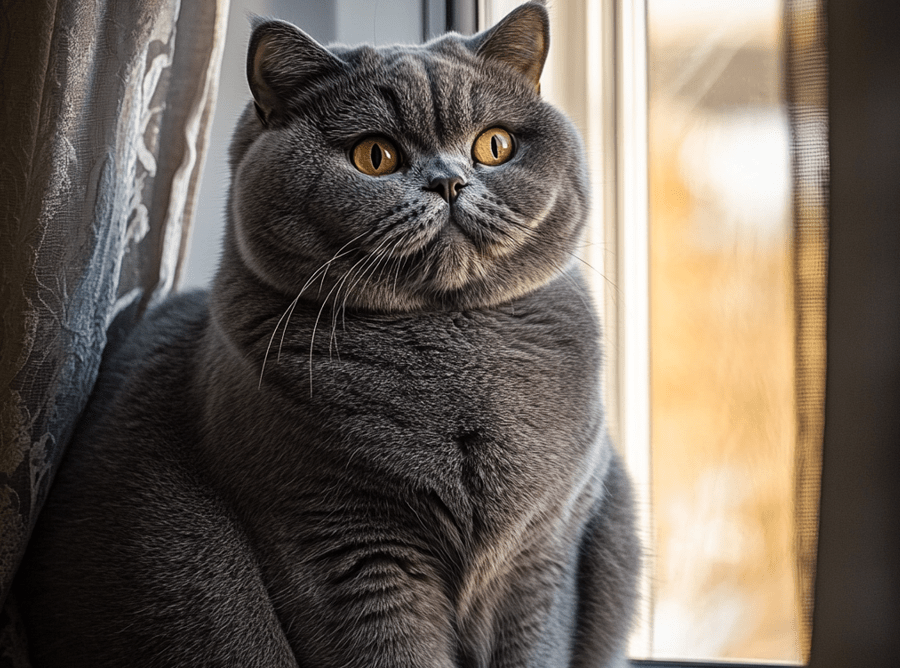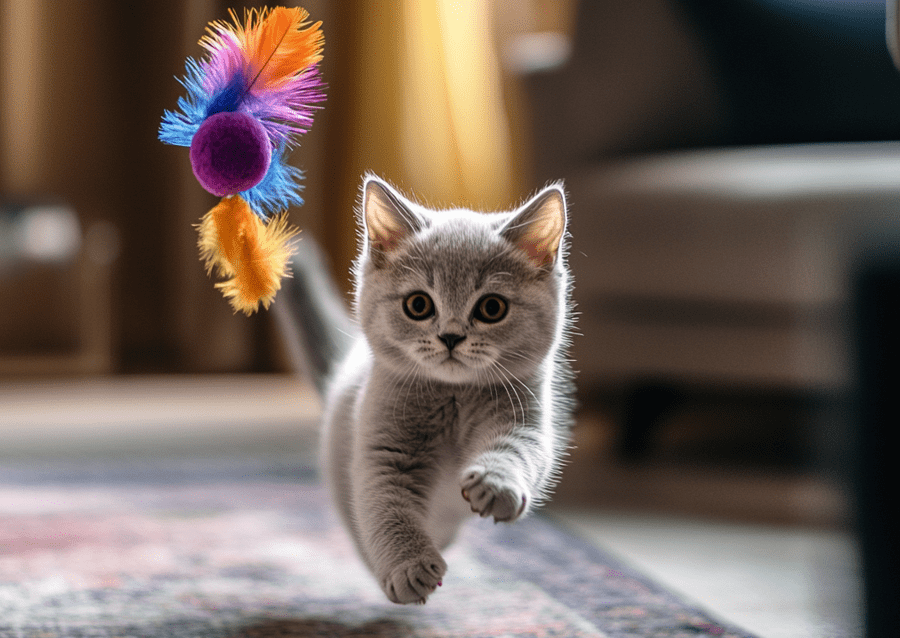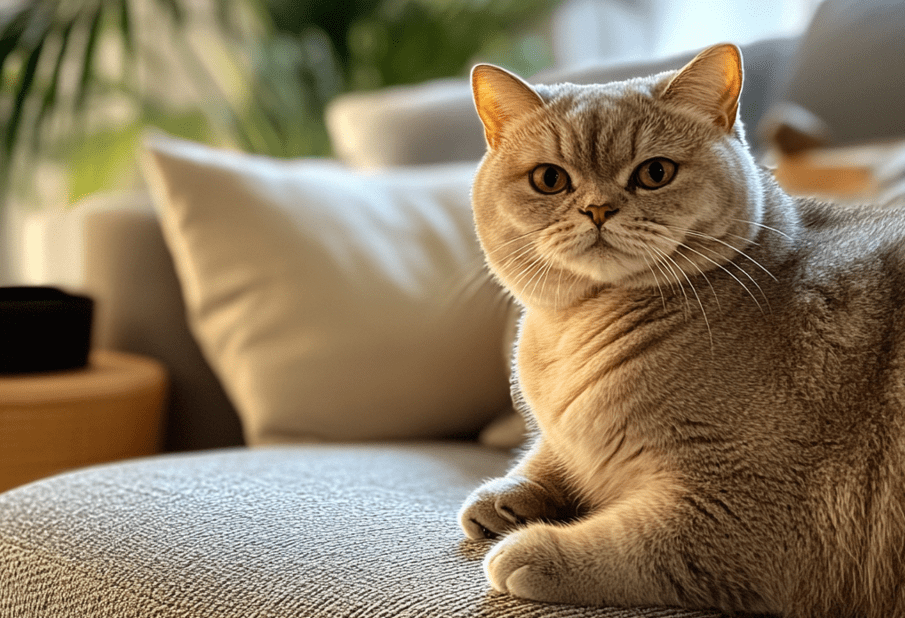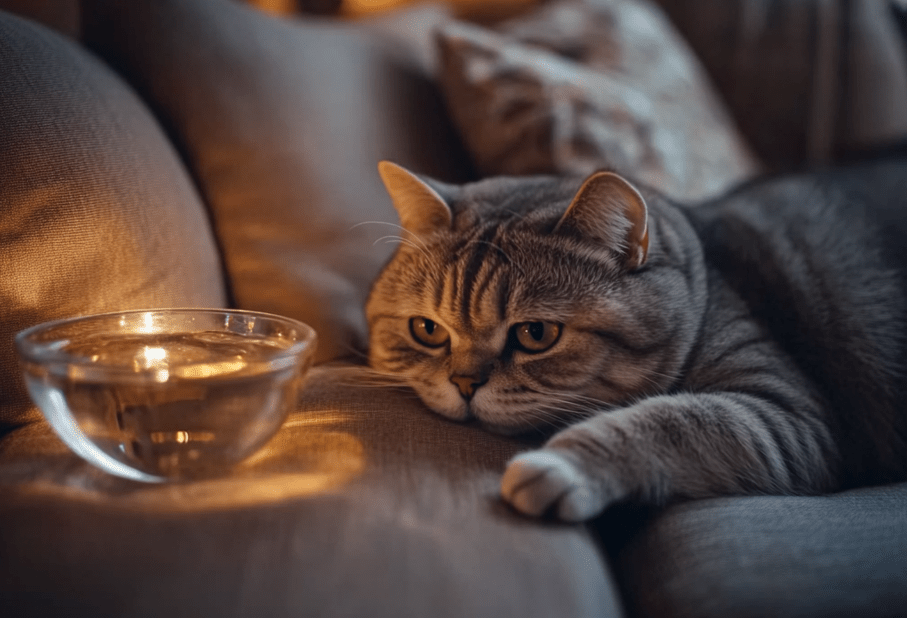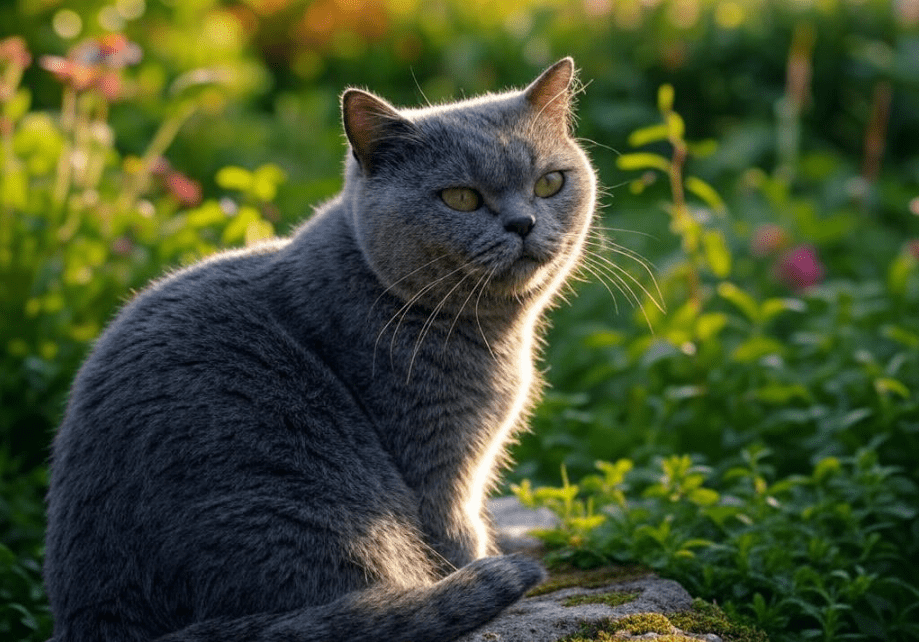
The British Shorthair cat, known for its plush coat, round face, and calm demeanor, is a cherished companion for many pet owners. As these beloved felines reach their senior years—typically over 10 years old—they require specialized care to maintain their health and quality of life. British Shorthair senior care involves understanding their unique needs, monitoring for age-related conditions, and providing a nurturing environment. This comprehensive guide offers actionable health tips, expert insights, and practical advice to help your senior British Shorthair thrive in their golden years.
Understanding Senior British Shorthairs
As British Shorthairs age, their bodies undergo changes that can affect their mobility, energy levels, and overall health. Senior cats are more prone to conditions like arthritis, kidney disease, and heart issues, such as hypertrophic cardiomyopathy (HCM). By tailoring their care to these needs, you can help your British Shorthair remain comfortable and happy. This guide covers essential aspects of senior care, including diet, exercise, veterinary care, and environmental adjustments.
Why Senior Care Matters
Senior British Shorthairs may not show obvious signs of aging until health issues become advanced. Proactive care can catch problems early, improve their quality of life, and extend their lifespan. With their laid-back nature, British Shorthairs often mask discomfort, making regular monitoring and attentive care crucial.
Common Health Concerns in Senior British Shorthairs
Before diving into care tips, it’s important to understand the health issues that commonly affect senior British Shorthairs:
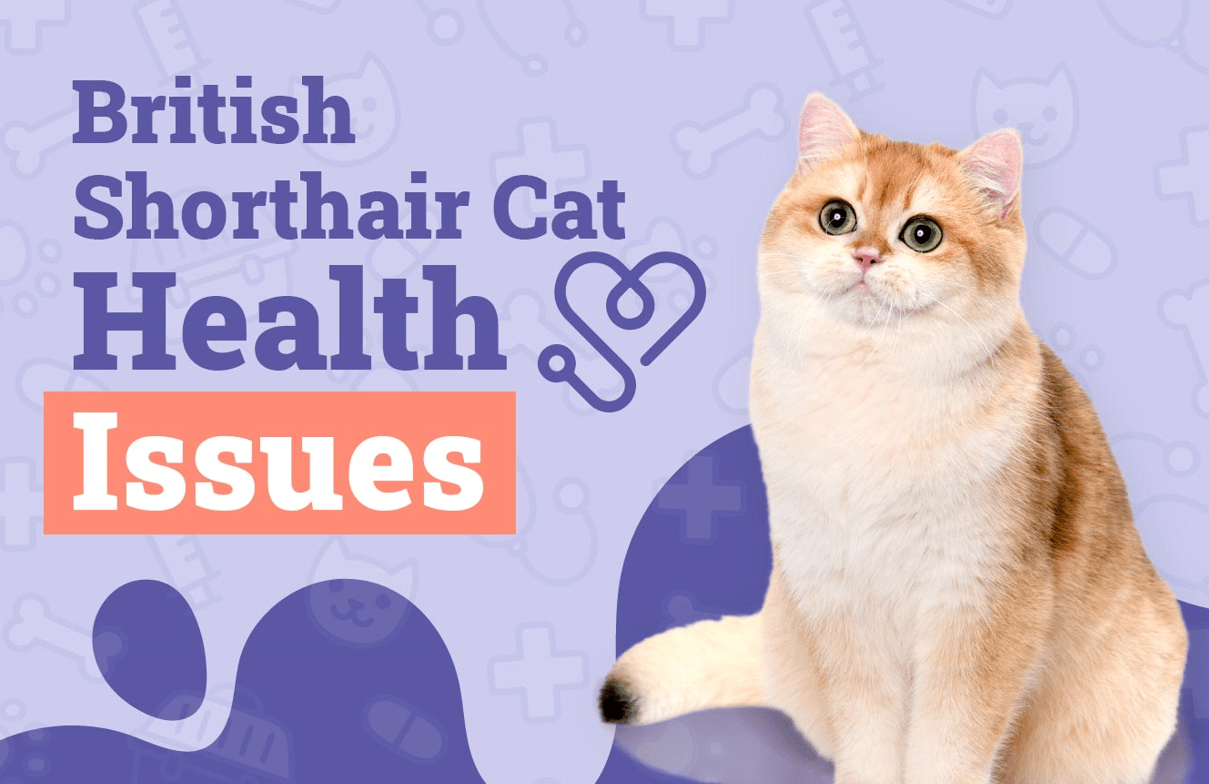
Hypertrophic Cardiomyopathy (HCM): A genetic condition causing heart muscle thickening, common in British Shorthairs, which can lead to heart failure if untreated.
Chronic Kidney Disease (CKD): A leading cause of illness in older cats, CKD affects kidney function and requires dietary and medical management.
Arthritis: Joint pain and stiffness can reduce mobility, especially in British Shorthairs due to their sturdy build.
Dental Disease: Periodontal issues can cause pain and lead to systemic health problems if not addressed.
Hyperthyroidism: An overactive thyroid can cause weight loss, increased appetite, and heart strain.
Diabetes: Obesity, common in British Shorthairs, increases the risk of diabetes in senior cats.
Cognitive Dysfunction: Similar to dementia in humans, this can cause disorientation, altered sleep patterns, or reduced grooming.
Understanding these conditions helps you tailor your care approach and recognize warning signs early.
Health Tips for Senior British Shorthair Care
Caring for a senior British Shorthair involves a combination of at-home monitoring, lifestyle adjustments, and regular veterinary care. Below are practical, evidence-based tips to support your cat’s health.
1. Optimize Their Diet
A balanced diet is critical for senior British Shorthairs to support organ function, maintain weight, and manage chronic conditions.
Choose Senior-Specific Food: Look for vet-recommended senior cat food with high-quality protein, reduced phosphorus (for kidney health), and omega-3 fatty acids (for joint and heart health). Brands like Royal Canin or Hill’s Science Diet offer formulas tailored for older cats.
Manage Weight: British Shorthairs are prone to obesity, which exacerbates arthritis and diabetes. Feed measured portions and avoid free-feeding. Consult your vet for a weight management plan if needed.
Support Kidney Health: For cats with CKD, low-protein, low-phosphorus diets can reduce kidney strain. Wet food is ideal to promote hydration.
Monitor Appetite: Sudden changes in appetite—either increased or decreased—may signal hyperthyroidism, dental issues, or other conditions.
Tip: Divide daily food into smaller, frequent meals to aid digestion and prevent overeating. Always provide fresh water to encourage hydration.
2. Encourage Gentle Exercise
While senior British Shorthairs are less active, regular movement supports joint health, circulation, and weight control.
Low-Impact Play: Use toys like feather wands, laser pointers, or soft balls to encourage short play sessions (5-10 minutes, 2-3 times daily). Avoid activities that strain joints.
Provide Accessible Spaces: Install ramps or low platforms to help your cat reach favorite spots without jumping, reducing stress on arthritic joints.
Mental Stimulation: Puzzle feeders or treat-dispensing toys keep their minds sharp and prevent boredom.
Tip: Watch for signs of fatigue or discomfort during play. If your cat seems reluctant to move, consult your vet to rule out pain or mobility issues.
3. Monitor Health at Home
Regular at-home checks can help you catch health issues early. Focus on these key areas:
Weight and Body Condition: Weigh your cat monthly using a pet or baby scale. Unexplained weight loss or gain may indicate hyperthyroidism, diabetes, or fluid retention.
Coat and Skin: A dull coat, excessive shedding, or reduced grooming can signal health issues or cognitive dysfunction. Brush your British Shorthair weekly to maintain coat health and check for skin abnormalities.
Litter Box Habits: Changes in urination (increased frequency, straining, or blood) or defecation (constipation or diarrhea) may indicate kidney issues, diabetes, or digestive problems.
Breathing and Heart Rate: Monitor resting breathing rate (normal is 15-30 breaths per minute) and listen for coughing or labored breathing, which could suggest HCM or respiratory issues.
How to Check Vital Signs:
Breathing Rate: Count chest movements for 15 seconds while your cat rests, then multiply by 4.
Heart Rate: Use a stethoscope on the left chest (behind the elbow) to count beats for 15 seconds, then multiply by 4 (normal is 140-220 beats per minute).
Tip: Keep a health journal to track observations and share with your veterinarian during checkups.
4. Maintain Dental Health
Dental disease is common in senior cats and can lead to pain, infections, or heart issues if bacteria enter the bloodstream.
Brush Teeth Regularly: Use a cat-safe toothbrush and toothpaste to clean teeth weekly, if possible. Start slowly to acclimate your British Shorthair.
Provide Dental Treats: Vet-approved dental chews or treats can reduce plaque buildup.
Schedule Professional Cleanings: Annual dental exams and cleanings under anesthesia may be necessary to address tartar or gum disease.
Tip: Watch for signs of dental pain, such as drooling, bad breath, or reluctance to eat hard food, and consult your vet promptly.
5. Schedule Regular Veterinary Checkups
Senior British Shorthairs benefit from biannual vet visits (every 6 months) to catch age-related issues early. Your vet may recommend:
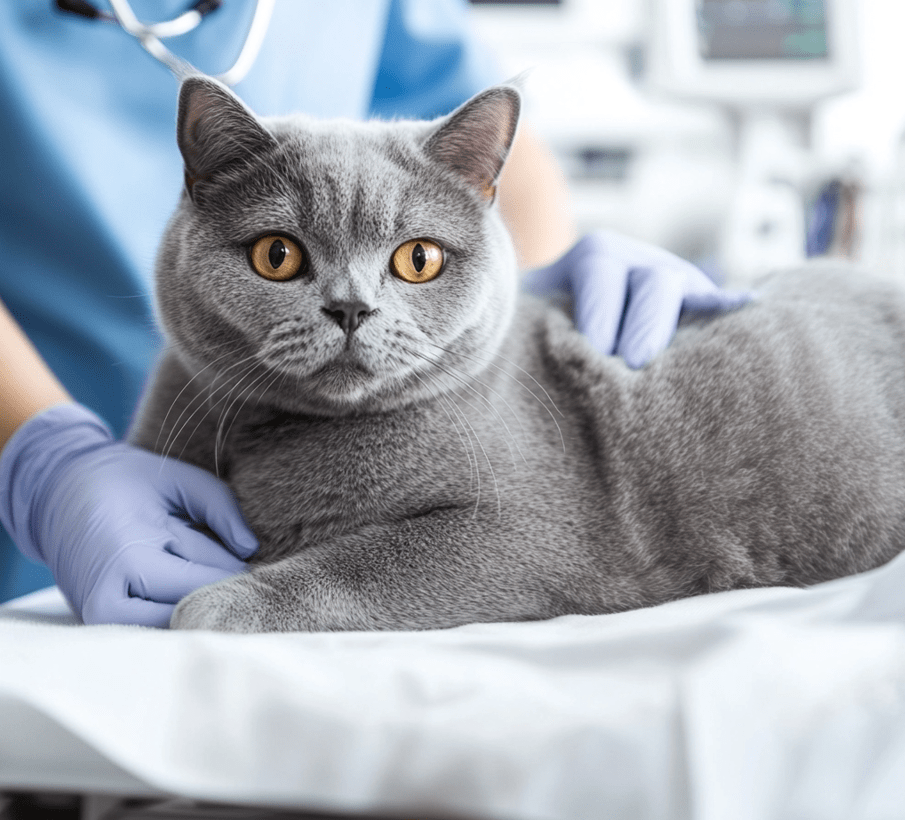
Blood and Urine Tests: To screen for kidney disease, diabetes, hyperthyroidism, and liver function.
Echocardiograms: To detect HCM or other heart conditions, especially since British Shorthairs are predisposed.
Blood Pressure Monitoring: High blood pressure is common in older cats and can damage the heart, kidneys, or eyes.
Joint Assessments: To diagnose arthritis and prescribe pain relief or supplements like glucosamine.
Tip: Ask about genetic screening for HCM, as early detection can guide treatment and improve outcomes.
6. Create a Senior-Friendly Environment
Adjusting your home to accommodate your senior British Shorthair’s needs can enhance their comfort and safety.
Soft Bedding: Provide orthopedic or heated pet beds to ease joint pain and keep your cat warm.
Accessible Litter Boxes: Use low-entry litter boxes to accommodate mobility issues. Place boxes in quiet, easy-to-reach areas.
Warm, Quiet Spaces: Senior cats are sensitive to cold and stress. Offer cozy hiding spots and minimize loud noises or household changes.
Non-Slip Surfaces: Add rugs or mats to slippery floors to help your cat move confidently.
Tip: Keep food, water, and litter boxes on the same floor to reduce the need for stairs, especially for cats with arthritis.
7. Manage Stress and Cognitive Health
Senior British Shorthairs may experience stress or cognitive decline, leading to anxiety, confusion, or altered behavior.
Maintain Routine: Stick to consistent feeding, play, and sleep schedules to provide stability.
Enrich Their Environment: Offer toys, scratching posts, and window perches to stimulate their senses.
Watch for Cognitive Dysfunction: Signs include disorientation, excessive vocalization, or forgetting litter box habits. Consult your vet for management strategies, such as supplements or medications.
Tip: Spend quality time with your cat daily through gentle petting or grooming to strengthen your bond and reduce stress.
8. Recognize Emergency Symptoms
Some health issues require immediate veterinary attention. Contact your vet if your British Shorthair shows:
1.Sudden collapse or fainting
2.Severe difficulty breathing or open-mouth breathing
3.Paralysis or dragging of limbs (possible blood clot from HCM)
4.Persistent vomiting, diarrhea, or refusal to eat
5.Seizures or extreme disorientation
Preventive Care for Senior British Shorthairs
Prevention is key to extending your cat’s lifespan and quality of life. Incorporate these habits:
Vaccinations: Ensure your cat stays up-to-date on core vaccines, as immunity weakens with age.
Parasite Control: Use vet-recommended flea, tick, and heartworm preventives to protect against infections.
Supplements: Discuss omega-3 fatty acids, glucosamine, or antioxidants with your vet to support joint, heart, and immune health.
Hydration: Encourage water intake with pet fountains or wet food to support kidney and urinary health.
Conclusion

Caring for a senior British Shorthair is a rewarding journey that requires attention, love, and proactive health management. By optimizing their diet, encouraging gentle exercise, monitoring health at home, and providing a comfortable environment, you can help your cat enjoy their golden years to the fullest. Regular veterinary care and early intervention for conditions like HCM, kidney disease, or arthritis are key to maintaining their well-being.
This guide equips you with the tools and knowledge to be the best caregiver for your senior British Shorthair. With dedication and care, you can ensure your feline friend remains a happy, healthy companion for years to come.

